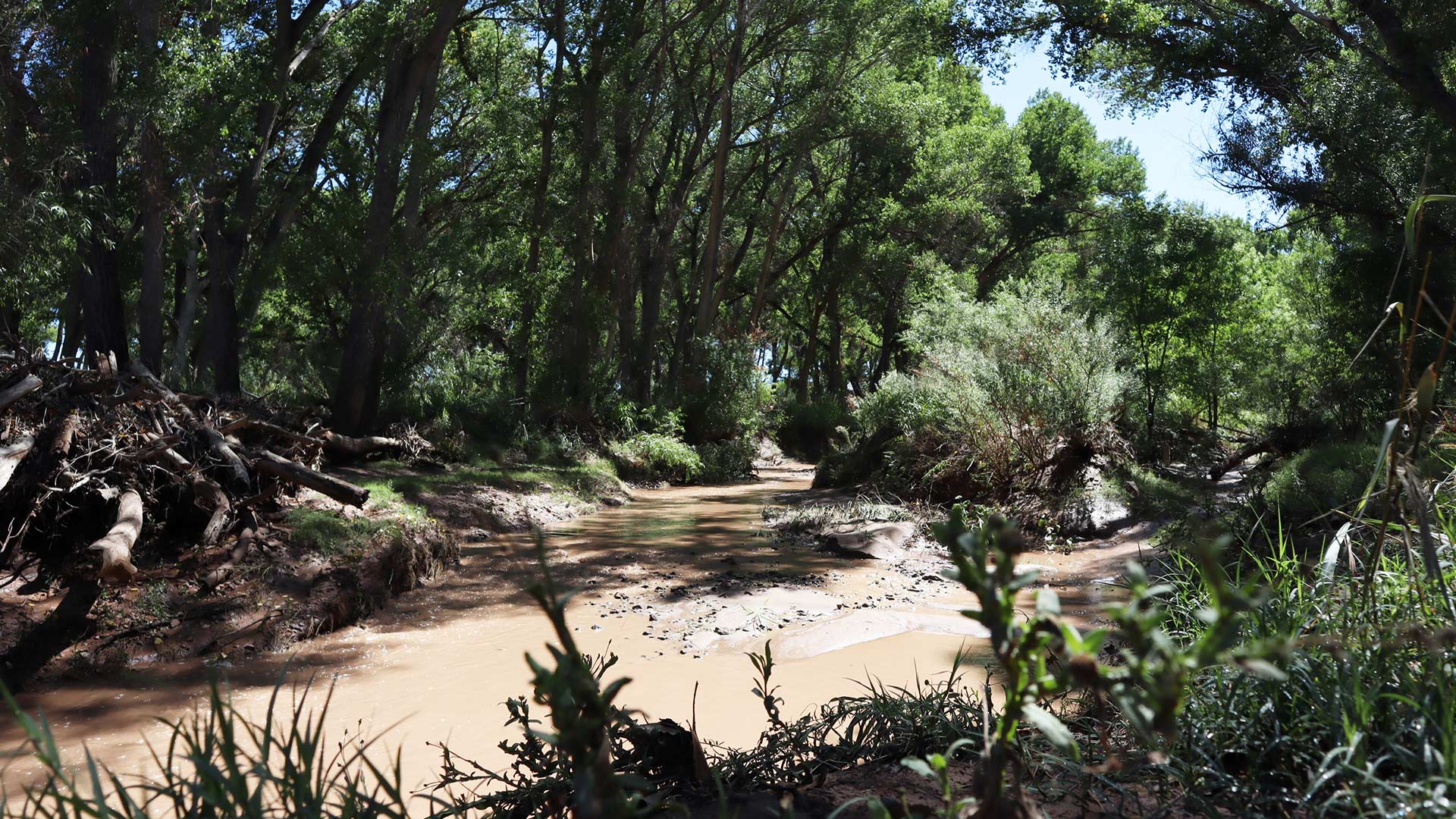 The San Pedro River post-Monsoon rain. September 14, 2023.
The San Pedro River post-Monsoon rain. September 14, 2023.
A Ninth Circuit Court of Appeals ruling has invalidated the U.S. Fish and Wildlife Service's biological opinion on Fort Huachuca’s water use from the San Pedro River Basin.
The court found the 2014 biological opinion failed to sufficiently demonstrate that the effects of the Army post's water conservation efforts were “reasonably certain” to occur.
Ninth Circuit Judge Kenneth Lee wrote that the Service’s biological opinion did not provide adequate evidence that Fort Huachcua’s 480-acre Preserve Petrified Forest easement would’ve been used for agriculture if that easement did not exist, and that the Service also didn’t provide “solid information” that supports the Army’s claim of water savings through that easement.
The court ordered the U.S. Fish and Wildlife Service and the Army to re-evaluate its water savings analysis with a new biological opinion.
"Fort Huachuca’s environmental team is currently reviewing the recent 9th Circuit Court of Appeals ruling regarding the effects analysis of conservation easements identified in the Programmatic Biological Assessment (May 2013) and the U.S. Fish & Wildlife Service’s Biological Opinion (March 2014)," said Fort Huachuca Public Affairs Officer Angela Camara in an email.
"Fort Huachuca actively engages the U.S. Fish & Wildlife Service to review initiatives consistent with the Army’s dedicated environmental stewardship and water-savings programs. As a matter of policy, we are unable to provide any further details related to an item of ongoing litigation,” she continued.
Because Fort Huachuca pumps water from the San Pedro River Basin, which could affect the habitat of species protected under the Endangered Species Act, the post conducted the required Programmatic Biological Assessment of its water usage to determine its effect 10 years ago.
The Fort credited their 480-acre Preserve Petrified Forest easement, which is located near Palominas, as providing 2,588 Acre-Feet per year in water savings.
In Lee's opinion, he wrote that even though the baseflows had decreased in the Babocomari River, a tributary of the San Pedro River, the Service's biological opinion still determined that the Fort's water use had a minimal effect on the protected species and their habitat.
The four species that are protected or proposed for protection that reside within the San Pedro River Basin are the northern Mexican garter snake, the Huachuca water umbel, the southwestern willow flycatcher, and the western yellow-billed cuckoo. The water conservation easements the Fort obtained aim to limit water use by restricting development for housing or aquaculture.
As part of the 2013 Programmatic Biological Assessment, the Fort conducted a “groundwater demand accounting,” which assessed the amount of water the Fort pumps from the ground and compared it with the amount the Fort returns to the basin via water recharge efforts and water savings.
The Programmatic Biological Assessment (PBA) found that in 2012, the Fort had a net water demand of -1,180 acre-feet, meaning the demand was higher than what the military base was giving back to the basin in recharge and savings measures. However, the PBA estimated that by 2014, the Fort would have a net groundwater surplus of 1,419 acre-feet, largely crediting the Preserve Petrified Forest (PPF) easement.
The PBA also contained a “groundwater flow model,” but according to Lee, "The model, however, does not incorporate the groundwater demand accounting’s predictions about the water savings from the PPF and other water conservation easements."
The model predicted that the Fort's conservation efforts would produce a "boost" to the baseflow along some sections of the San Pedro River yet also predicted that the Fort would have a small negative impact on the baseflow of the Babocomari River by -.1 cubic feet-per-second.
The Center for Biological Diversity, which was one of the parties who brought the lawsuit, claimed that the Service didn't provide sufficient evidence that the decreased baseflow of the Babocomari River would have a minimal effect on the northern Mexican garter snake population "partly because the garter snakes can move up- or downstream into more suitable habitats" according to the court opinion.
The court rejected the Center for Biological Diversity's argument on that point.

By submitting your comments, you hereby give AZPM the right to post your comments and potentially use them in any other form of media operated by this institution.